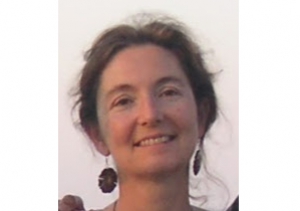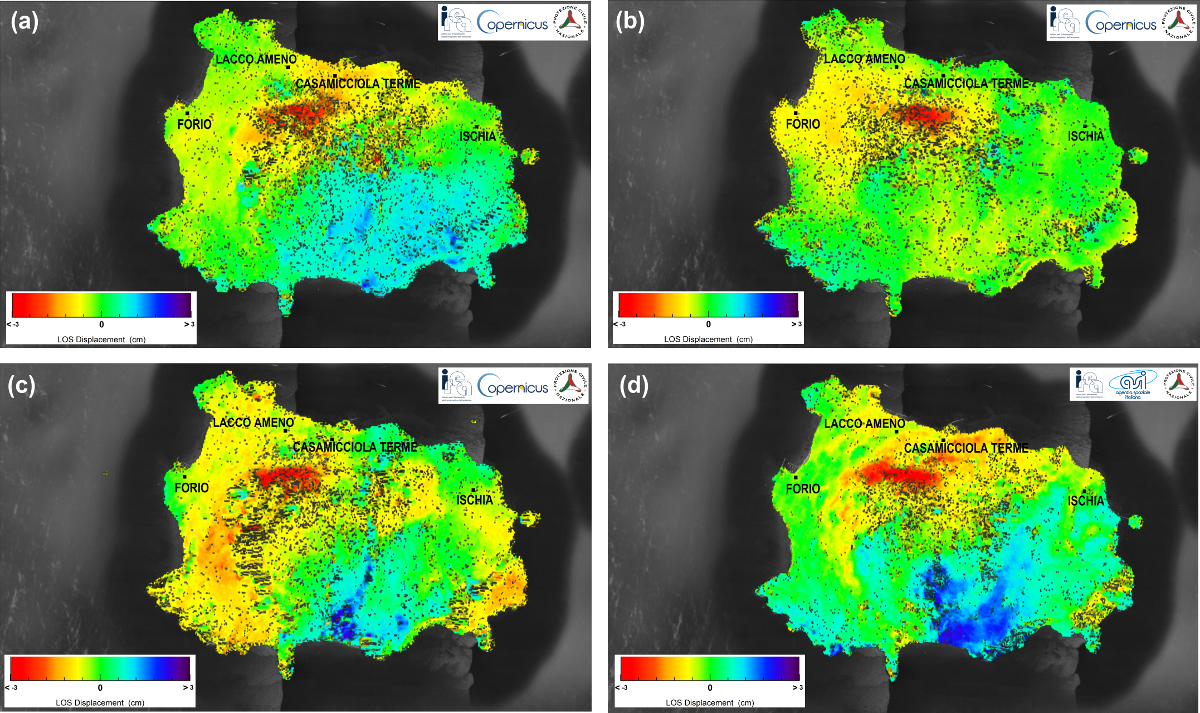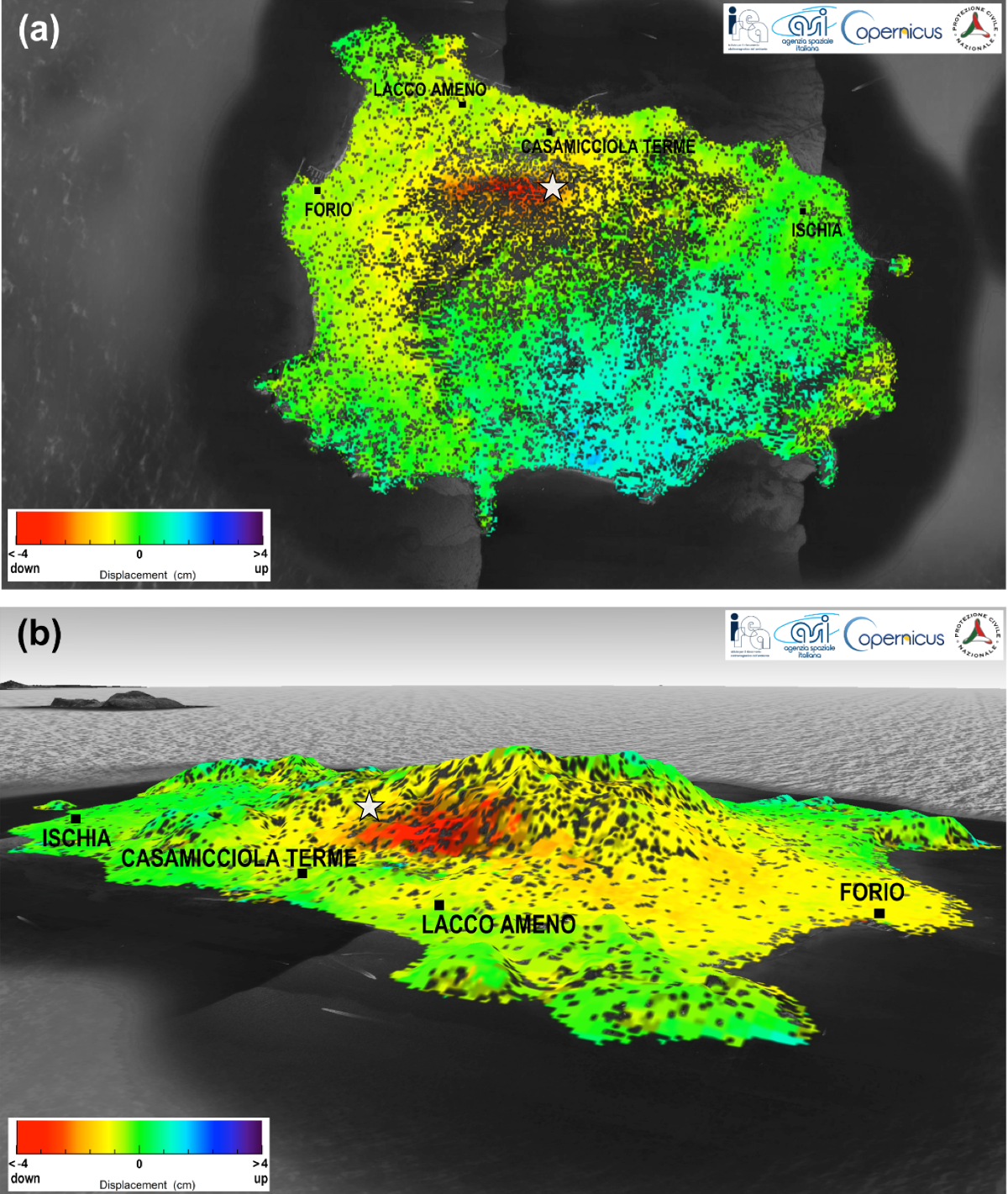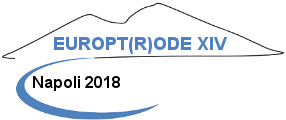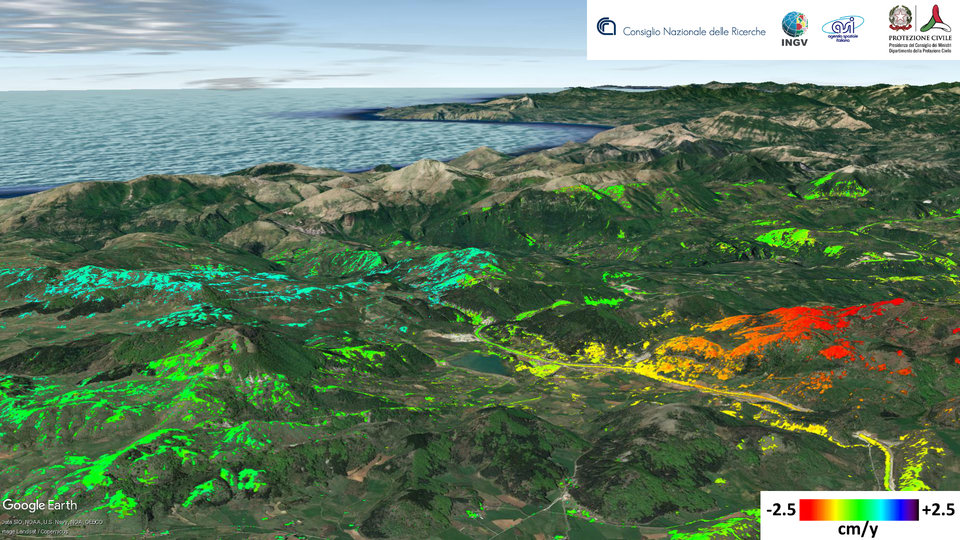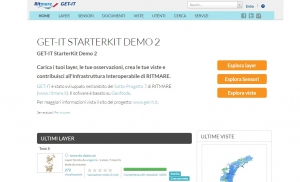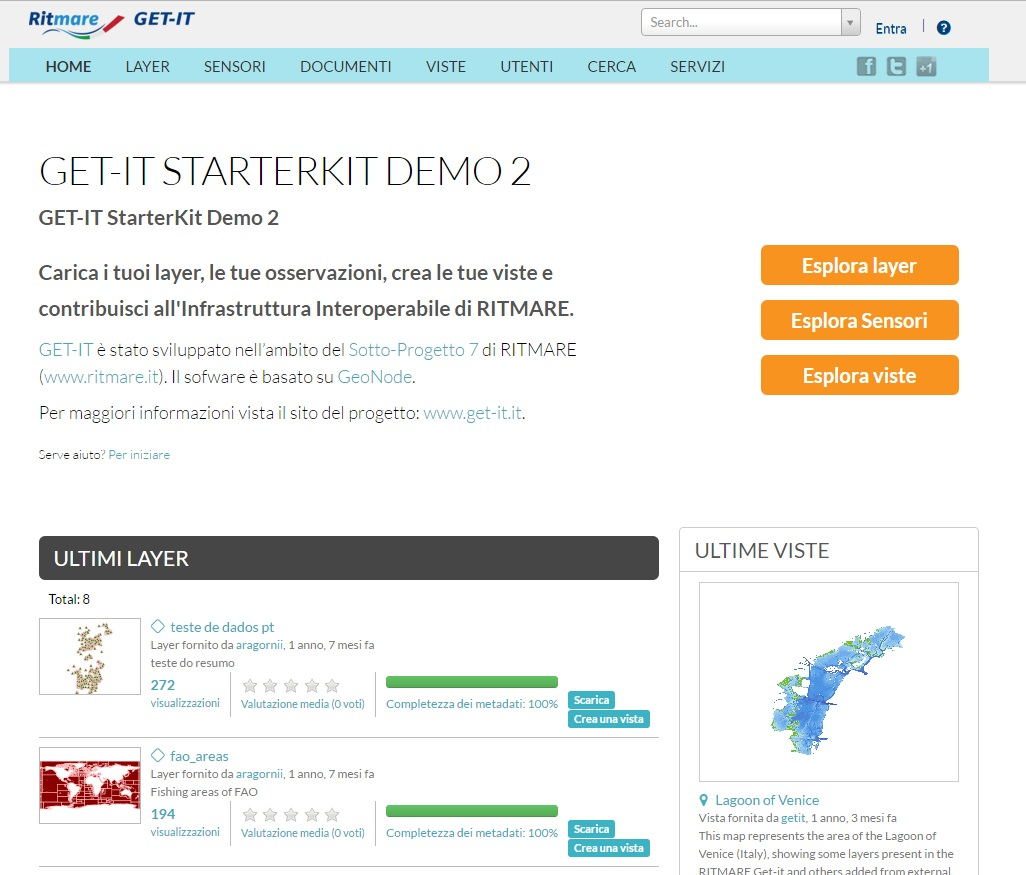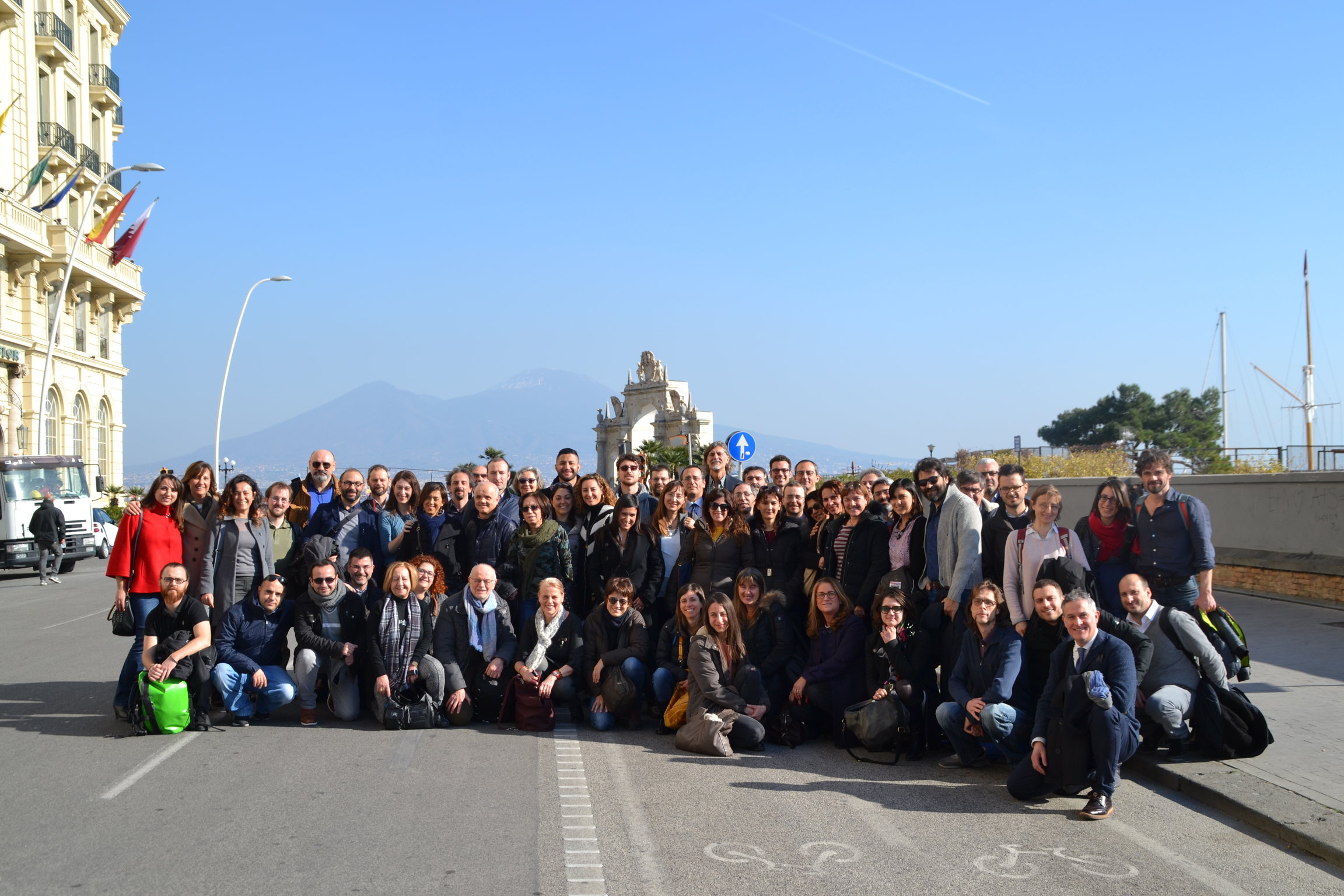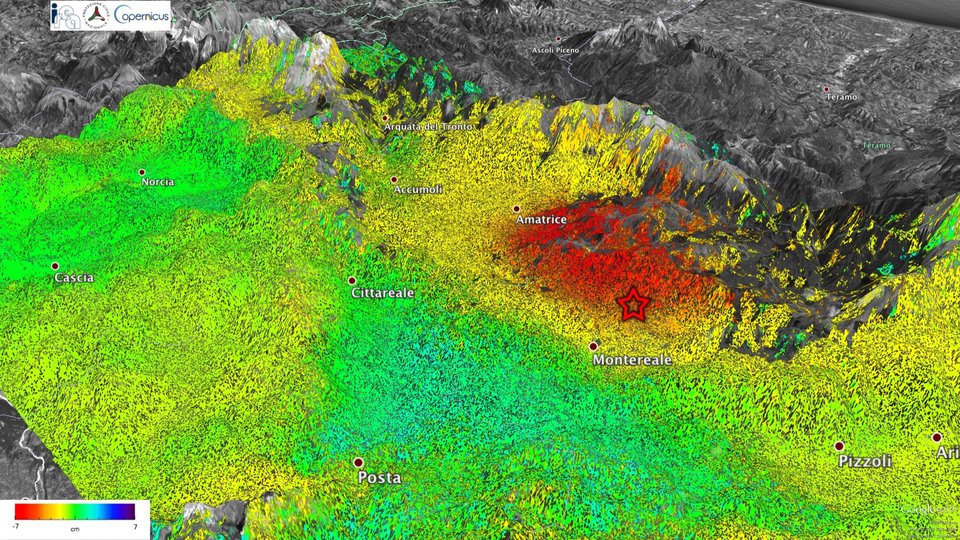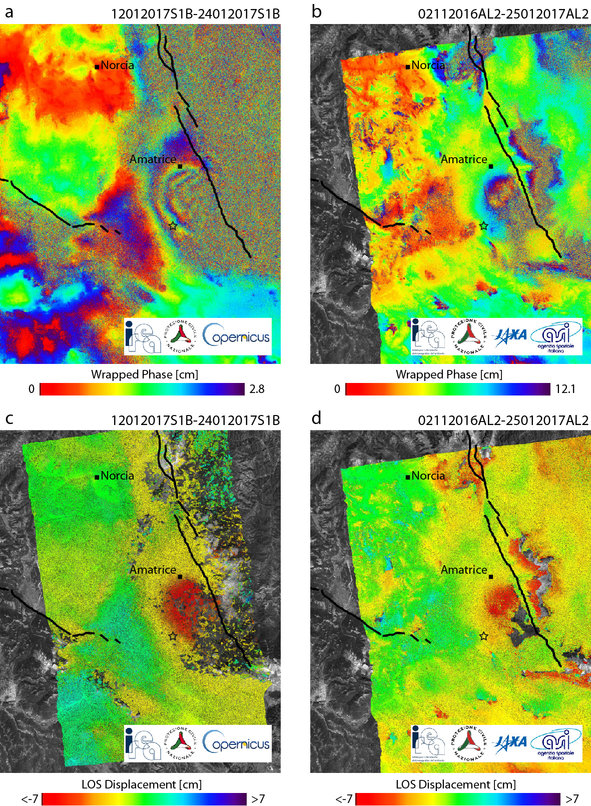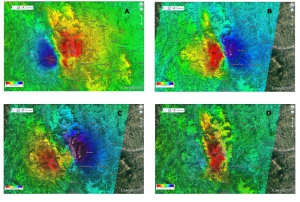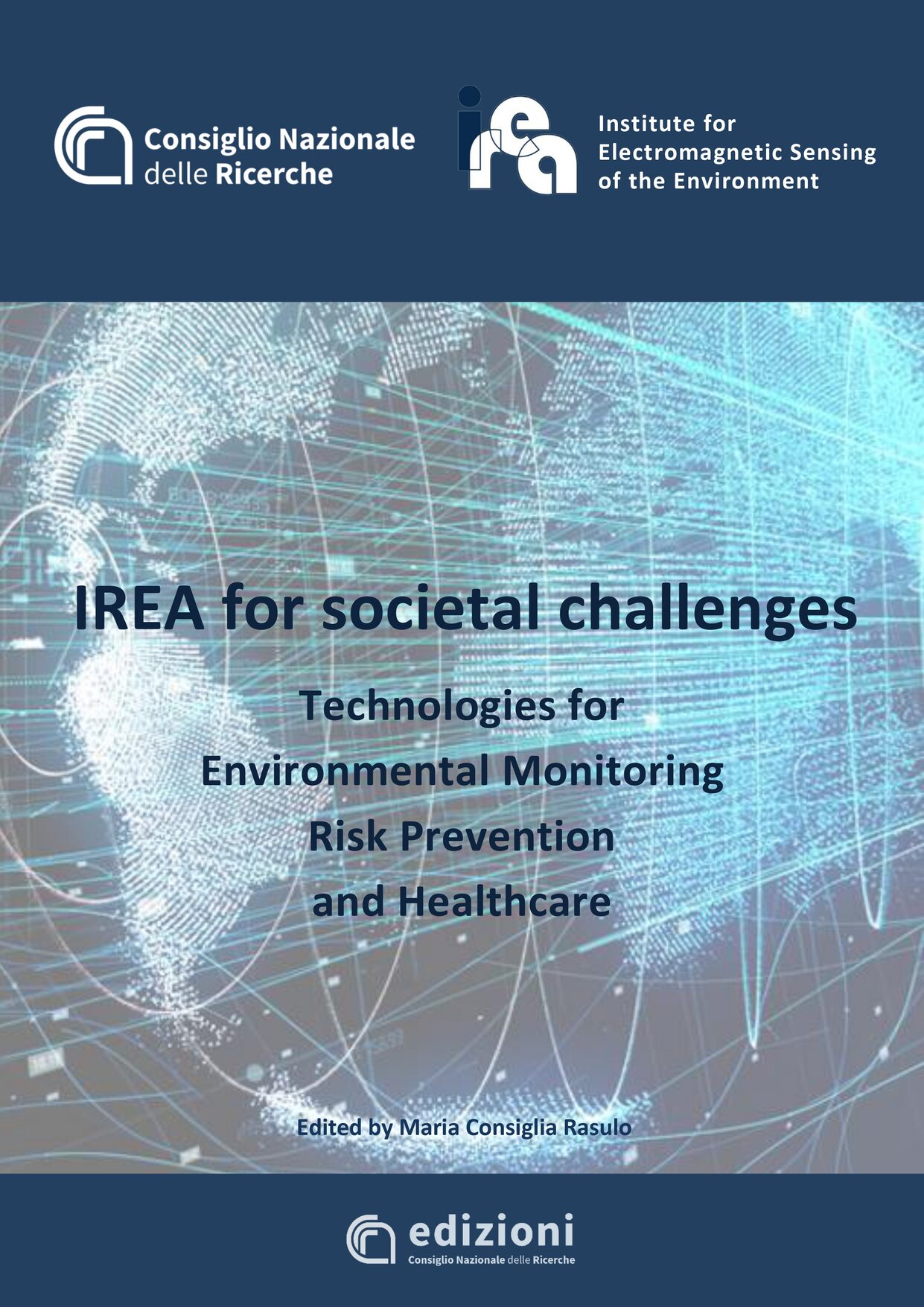
Maria Consiglia Rasulo
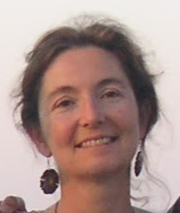 During the World Congress of the International Fuzzy Systems Association (IFSA) held from June 27 to 30 in Otsu, Gloria Bordogna, Senior Researcher at IREA, was awarded the IFSA Fellow grade. The title, reserved reserved for distinguished contributors whose works have had a significant impact on fuzzy logic theory and applications, was handed during the European Society for Fuzzy Logic and Technology (EUSFLAT) conference, held in Warsaw on 11-15 September 2017.
During the World Congress of the International Fuzzy Systems Association (IFSA) held from June 27 to 30 in Otsu, Gloria Bordogna, Senior Researcher at IREA, was awarded the IFSA Fellow grade. The title, reserved reserved for distinguished contributors whose works have had a significant impact on fuzzy logic theory and applications, was handed during the European Society for Fuzzy Logic and Technology (EUSFLAT) conference, held in Warsaw on 11-15 September 2017.
Gloria Bordogna has been working for many years in the field of application of Fuzzy Set theory to enable modeling of uncertainty and imprecision in information retrieval systems, databases, and geographic information systems for the representation of textual content, flexible querying, analysis of textual and geographic information on the Web and in social networks.
Immediately after the Ischia earthquake of 21 August 2017, researchers at CNR-IREA measured the Earth surface displacements thanks to the data acquired by the European Sentinel-1 and Italian COSMO-SkyMed constellations of satellites. A subsidence up to 4 centimetres was measured close to Casamicciola Terme.
During the post-event phase, the Department of Civil Protection (DPC) activated the National Research Council - Institute for the Electromagnetic Sensing of the Environment (CNR-IREA) of Naples, as Centre of Competence in the radar data processing, to analyse and measure the Earth surface displacements induced by the earthquake.
By exploiting the radar data acquired by the European Sentinel-1 satellites of the Copernicus programme, as well as those of the Italian COSMO-SkyMed (CSK) constellation - owned by the Italian Space Agency (ASI), Centre of Competence for the acquisition and use of satellite data, and the Italian Ministry of Defence - a team of researchers at CNR-IREA measured the earthquake-induced ground displacements by exploiting the Differential SAR Interferometry (DInSAR) technique. Such a technique allows measuring, by using radar images acquired before and after an event, the ground displacement along the sensor Line of Sight (LOS) occurred in the interval between the two acquisitions with centimetre accuracy. Moreover, thanks to the satellite ascending and descending passes it is possible to compute the Vertical component of the deformation field.
Table 1 lists the interferometric pairs shown in the following Figure 1; note that the list of Table 1 represents only a portion of the interferograms effectively generated by CNR-IREA
Table 1: Co-seismic interferometric pairs relevant to the Ischia earthquake
|
Sensor |
Interometric Pair |
Wavelength [cm] |
Perpendicular Baseline [m] |
Orbit Pass |
|
S1 |
16082017 – 22082017 |
5.5 |
7 |
DISC |
|
S1 |
16082017 – 22082017 |
5.5 |
55 |
ASC |
|
S1 |
17082017 – 23082017 |
5.5 |
108 |
ASC |
|
CSK |
19082017 – 23082017 |
3.1 |
67 |
DISC |
Figure 1 shows the co-seismic displacement maps in LOS obtained from the S1 and CSK data pairs reported in Table 1 and computed in correspondence to the pixels characterized by a high quality of the interferometric signal (the so called coherent pixels). Although several atmospheric artefacts are clearly present, it is evident a region of increased range change (represented in red) around 1 km South-West of Casamicciola Terme.
Figure 1 – Displacement maps (in LOS) obtained from Sentinel-1 (S1) and COSMO-SkyMed (CSK) SAR data: (a) map relevant to the 16082017– 22082017 S1 ascending pair; (b) map relevant to the 16082017–22082017 S1 descending pair; (c) map relevant to the 17082017– 23082017 S1 ascending pair; (d) map relevant to the 19082017– 23082017 CSK ascending pair. Contains modified Copernicus data (© 2017). CSK data are copyright of ASI (2017).
By jointly exploiting the ascending (i.e., the satellite flew from South to North) and descending (the satellite flew from North to South) displacement maps shown in Figure 1, CNR-IREA researchers computed the Vertical component of the ground displacements. Such a map is presented in Figure 2, in both a planar and 3D views. In particular, it was detected a subsidence up to 4 centimetres in a region (in red) close to Casamicciola Terme, the area most affected by building damages.
Such results have been shared with the Istituto Nazionale di Geofisica e Vulcanologia (INGV), in a framework of fruitful cooperation. Moreover, detected displacements are consistent with the earthquake location of INGV (updated on 25 August 2017).
Figure 2 – Vertical component of the ground displacements computed from the maps of Figure 1: a) planar view; b) 3D view. The white star indicates the location of the epicentre according to INGV (updated on 25 August 2017). Contains modified Copernicus data (© 2017). CSK data are copyright of ASI (2017).
To obtain a synoptic picture of the ground displacements induced by an earthquake close to the epicentre area in very short time represents one of the objectives of the Italian DPC during a seismic crisis. The obtained results came out after a long cooperation between the DPC and their Centre of Competences – in this specific case CNR-IREA and ASI. On the basis of their expertise, such Competence Centres support the DPC in the use of satellite data and related value added information, as well as in their integration with the in situ data provided by others Competence Centres. This activity allowed developing products, methods and procedures that improved the capabilities of the National Service of the Civil Protection during emergency phases.
IREA, together with the Institute of Applied Physics at Carrara (IFAC-CNR) and the Italian Society of Optics and Photonics (SIOF), is organizing in Naples the XIV edition of Europt(r)ode, one of the most important Conferences worldwide in the field of optical sensors for chemical and biological applications.
Submission of contributions is open. For more information visit the Europt(r)ode XIV website
Revealed, for the first time in Italy, in the Pollino area, the presence of slow fault movements during a sequence of low magnitude earthquakes, which help to explain why in this area, compared to the rest of the Apennines, the earthquakes of higher magnitude are less frequent. The study was published in "Scientific Reports".
During the long seismic sequence which affected the Pollino area (Italy) from 2010 to 2014, there were not only earthquakes but also a slow and continuous slip of faults, without any seismic activity. This has been pointed out the first time in Italy by a research just published in "Scientific Reports" by a team of researchers from the Institute of Geophysics and Volcanology (INGV), the Institute for Electromagnetic Sensing of the Environment of the National Research Council (IREA -CNR), in collaboration with the Civil Protection Department. The findings of the study shed new light on the seismicity in historical times in the Pollino area.
"In recent years," says Daniele Cheloni, Researcher at INGV and first author of the work, "it was noted that low magnitude seismic sequences are often accompanied by aseismic slip, although the lack of a sufficient number of ground deformation measurements during these sequences has prevented, so far, the proof of such hypothesis in the Italian area".
Earthquakes, as known, are caused by movements of faults, i.e., crustal fractures, which occur very quickly (within seconds). In other cases, the same faults may move slowly (over weeks or months) without generating earthquakes (aseismic slip). To demonstrate the simultaneous presence of seismic activity and aseismic movements, researchers have used the GPS station data (constellation of satellites of the Global Positioning System) of the INGV RING network (http://ring.gm.ingv.it), installed in 2011 as part of an INGV project for the study of the tectonic deformation in the Pollino area, and radar images collected from the COSMO-SkyMed satellite of the Italian Space Agency (ASI), provided as part of the ASI Open Call COSMO-SkyMed.
"Available Satellite data," explains Eugenio Sansosti Senior Researcher at IREA-CNR, "provided a high detail, both in space and in time, unimaginable with other sensors, allowing us to measure such subtle and slow ground deformations, like those related to aseismic slip". This was possible also thanks to the intensification of satellite acquisitions in the Pollino area set up by ASI, following a Civil Protection Department advice, during the seismic sequence.
The huge amount of satellite data available requires a precise and complex processing operation. "We used innovative techniques developed at our Institute over past years, to follow the changes over the time of the deformation signal," specifies Gianfranco Fornaro Senior Researcher at IREA-CNR, "and comparison of our results with GPS data did not leave room to any doubt on the reliability of our measurements."
The obtained results are important for the understanding of the seismicity in the Pollino area. Historical records of the last centuries show no evidence of large seismic events that, in fact, affect adjacent areas of the Apennines and Calabria. "The aseismic movement contributes to the release of a part of the tectonic deformation that would be released, otherwise, by earthquakes. This may explain why, compared to the rest of the Apennines, large magnitude earthquakes are relatively less frequent in the Pollino area. Further advances in the understanding of the seismogenic phenomena in the Italian area need observational systems like the RING GPS network, the COSMO-SkyMed mission, and the National Seismic Network," says Nicola D'Agostino, Senior Researcher at INGV and coordinator of the research.
The GET-IT software was recently recognized a useful tool to make the INSPIRE Directive operational. GET-IT is now reviewed and registered in the “INSPIRE in Practice” catalogue. “INSPIRE in Practice” is the official INSPIRE platform dedicated to every user engaged in geographic information domain who would adopt tools contributing to spatial data interoperability among different European countries. “INSPIRE in Practice” is particularly devoted to give visibility to practices and means able to implement the INSPIRE Directive, resulting in an online collaborative framework that fosters the exchange of knowledge and expertise between different users.
GET-IT was developed by CNR-IREA and CNR-ISMAR in the RITMARE research framework in order to enable researchers to manage, share, visualize and download spatial data according to OGC standards. GET-IT allows managing maps, observations and documents by using a single tool resulting in the first open-source collaborative effort toward the integration of traditional geographic information with observational data. GET-IT is a tool that could be easily adopted by a different range of researchers in their working practice, not only to manage different types of spatial data but also to easily compile corresponding metadata. GET-IT includes the EDI metadata editor tool for the guided metadata creation and publication according to INSPIRE standards.
GET-IT is distributed with an open-source license ( GPL v.3.0 ) and through a ready to use virtual machine. More info are available at http://www.get-it.it/
The IREA staff has 83 units, distributed between the headquarters in Napoli and the Secondary Location in Milano, including 43 structured researchers and technologists (10 are temporary researchers), 16 technical and administrative assistants (6 are temporary staff) and 23 unstructured researchers.
Furthermore, 10 associate researchers and many young people in training through scholarships, PhDs, traineeships, and students who carry out their thesis at the Institute, contribute to the research activities.
|
Despite the copious snow cover and the adverse weather conditions, the Sentinel-1 and ALOS-2 satellites allowed a team of IREA-CNR scientists to retrieve the Earth’s surface deformation induced by the recent seismic sequence in central Italy, whose main shock reached a magnitude of Mw 5.5 on 18 January 2017. Thanks to the joint processing of two radar images acquired across the main event by the Sentinel-1 satellite constellation of the European Copernicus program, it was possible to generate the so-called co-seismic Interferogram (see Figure 1a), a map that permits scientists to directly relate the radar signal to the displacement of the ground. Exploiting the ALOS-2 data of the Japanese Space Agency (JAXA), it has also been carried out a similar analysis that confirms the main findings obtained via the Sentinel-1 data (see Figure 1b). Starting from the shown interferograms, the corresponding displacement maps have also been generated. They show (see Figures 1c and 1d) that the Earth surface moved away from the satellite with a maximum of about 10 cm in an area south to Amatrice. A zoom of the area affected by the coseismic deformation (displayed in red) is shown in figure 2. These maps have been subsequently provided to INGV for modeling the causative source of the seismic event. A more detailed analysis is provided here:
The activity is coordinated by the Italian Department of Civil Protection (DPC) and is performed by a research team of the Institute for Electromagnetic Sensing of the Environment of the National Research Council (CNR-IREA in Naples) and the National Institute of Geophysics and Volcanology (INGV), which are centers of competence in the satellite data processing and seismology sectors, respectively, with the support of the Italian Space Agency (ASI). The Copernicus program is led by the European Commission. The European Space Agency is in charge of developing the Sentinel satellites; ESA also operates the two Sentinel-1 satellites. The ALOS-2 data were provided by JAXA in the framework of an agreement with the Italian Space Agency (ASI) for the exchange of data useful to emergency management. The activity has been also supported by the GEP project of the European Space Agency (ESA) and the project "High Technological Infrastructure for Integrated Monitoring of Climate and Environment" (I-AMICA) funded by the Italian Ministry of Education, University, and Research as part of the National Operational Programme (PON).
|
|
Figure 1 – Co-seismic interferograms and displacement maps generated from Sentinel-1 and ALOS-2 data. a) Sentinel-1 interferogram relevant to the 12012017-24012017 ascending pair (Track 117). b) ALOS-2 interferogram relevant to the 02112016-25012017 ascending pair (Track 197). c) Displacement map (in LOS) computed from the Sentinel-1 interferogram of Figure 1a. d) Displacement map (in LOS) computed from the ALSO-2 interferogram of Figure 1b. Black star indicates the location of the Mw 5.5 epicenter of the 18 January 2017. Black lines indicate main regional structures. Contains modified Copernicus data (2017) and ALSO-2 data (©JAXA 2016-2017).
|
Gianfranco Fornaro, Senior Researcher at IREA, has been elevated to Fellow by IEEE for his for contributions to SAR processing in differential interferometry and tomography. The Fellow grade will be effective by 1 January 2017.
IEEE, “the Institute of Electrical and Electronics Engineers”, is the world's largest technical professional organization dedicated to advancing technology for the benefit of humanity. IEEE has more than 420,000 members in over 160 countries and publishes a third of the world’s technical literature in electrical engineering, computer science, and electronics.
The prestigious elevation to the highest grade of membership in the IEEE is reserved, following a rigorous evaluation procedure, to IEEE members that have contributed through extraordinary accomplishments to the advancement or application of engineering, science, and technology, bringing the realization of significant value to society.

Riccardo Lanari, director of IREA, has been announced as the recipient of the 2017 Christiaan Huygens Medal, one of the prizes that the European Geosciences Union (EGU) awards each year to eminent scientists for their outstanding research contribution to the Earth, planetary and space sciences.
In particular, the Christiaan Huygens Medal rewards innovations, discoveries, or relevant contributions that have led to significant progress in the area of "Geosciences Instrumentation and Data Systems".
The prize will be awarded at the EGU 2017 General Assembly, which will take place in Vienna on 23–28 April.
The study of ground deformation and seismic sources, now focused on the 30 October 2016 earthquake, is enriched with new important results obtained from the processing of radar images collected from the Sentinel-1 constellation along ascending and descending orbits
Thanks to the new radar images, acquired on 1 November 2016 from ascending and descending orbits by the (C-band) sensors of the Sentinel-1 constellation of the Copernicus European Programme, the processing performed by CNR-IREA using the differential radar interferometry technique has now revealed the surface deformation related to the earthquake, in all its extension (about 1100 square kilometers) and complexity.
In particular, by combining the deformation maps obtained by the Sentinel-1 ascending and descending acquisitions (Figure 1A and Figure 1B, respectively) it is possible to estimate both the vertical and east-west displacement components. Two large horizontal deformation lobes are clearly visible (see Figure 1C): the first is centered approximately in the Montegallo zone and exhibits an eastward movement (with a maximum deformation of about 40 cm), the latter is centered in the area of Norcia with westward deformation (with a maximum displacement of about 30 cm).
Figure 1 Results of the analyses carried out with Sentinel-1 radar data of the Copernicus Programme through the differential radar interferometry technique: on the top the two co-seismic deformation maps (in the radar line of sight) are presented, obtained from ascending and descending orbits (Panel A and B, respectively) starting from the Sentinel-1 data acquired on 10.26.2016 (pre-event images) and 11.01.2016 (post-event images); on the bottom the maps of the east-west (Panel C) and vertical (Panel D) components of surface deformations are shown, obtained by jointly exploiting the ascending (South-North) and descending (North-South) passages. The red star represents the epicenter of the earthquake of 30 October 2016, the white ones are the epicenters of the events of 24 August and 26 October 2016.
It is also evident a significant vertical deformation (Figure 1D) with a strong subsidence pattern down to 60 cm in the area of Castelluccio (already retrieved from previous analysis of Sentinel-1 data), and an uplift of about 12 cm in correspondence to the area of Norcia. It is worth noting that the deformation pattern related to the area of Norcia was already partially retrieved through the analysis carried out by jointly using the first Sentinel-1 data and those provided by the COSMO-SkyMed constellation (X-band), which was developed by the Italian Space Agency in cooperation with the Italian Ministry of Defense.
Finally, it is pointed out that, due to the considerable amount of the occurred deformation, it is reasonable to assume that the detected displacements are underestimated up to 30%. However, these effects will be corrected thanks to the exploitation of new already planned images that will be acquired in the next coming days, especially those collected by the radar sensor (L-band) onboard the Japanese satellite ALOS 2.
The activity is coordinated by the Italian Department of Civil Protection (DPC) and is performed by a research team of the Institute for Electromagnetic Sensing of the Environment of the National Research Council (CNR-IREA in Naples) and the National Institute of Geophysics and Volcanology (INGV), which are centers of competence in the satellite data processing and seismology sectors, respectively, with the support of the Italian Space Agency (ASI).
The Copernicus programme is led by the European Commission. The European Space Agency is in charge of developing the Sentinel satellites; ESA also operates the two Sentinel-1 satellites.
Tag Cloud
Research activity in evidence
-
Biological effects of extremely low frequency electromagnetic fields
Power lines, as well as powered devices present in the…


